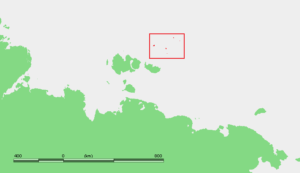
A report in the June 2, 2017 edition of Science magazine digs into findings from an ancient archaeological site on the very remote and very, very cold Zhokhov Island, to show that the locals, hardy human hunters, not only lived and worked with dogs, but also quite probably selectively bred the dogs for certain traits.
Archaeologist Vladmir Pitulko with the Russian Academy of Sciences has been excavating on Zhokhov Island since 1989, where he has found dog bones as well as remnants of wooden sleds. With archaezoologist Aleksey Kasparov, also of the RAS, they’ve compared two of the most complete dog skulls found to those of contemporary Siberian Huskies and wolves.
Pitulko and Kasparov wanted to first determine if the skulls were those of dogs or wolves. They first employed two key skull ratios: snout height to skull length and cranium height to skull length. Using these ratios, they were able to reliably distinguish between skulls of a modern wolf and husky.
Continue reading “Findings May Reveal Earliest Evidence of Selective Dog Breeding”